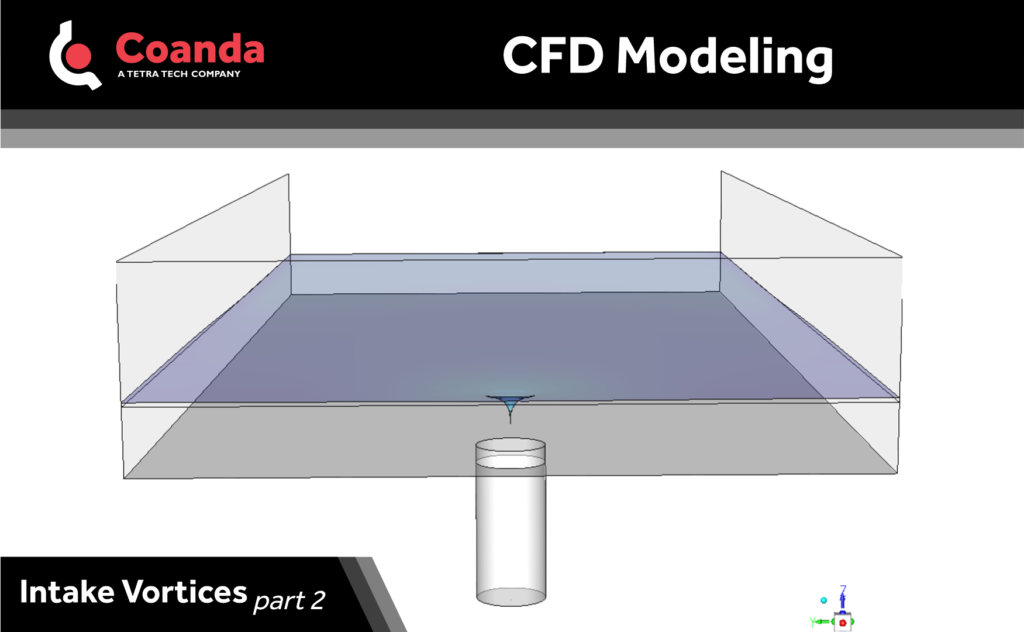CFD Modeling of Intake Vortices
Posted on December 13, 2022 Computational Fluid Dynamics Water
This post was originally published in two parts which have been combined below.
Part 1
The onset of vortex formation on the free surface intake of hydraulic structures, such as hydropower intakes, pump sumps, and multiphase flow skimmers, is important since it can affect the reliability and operability of a given process.
Intake structures can be positioned in different orientations (vertical, horizontal, inclined) and the critical submergence depth—the minimum depth to avoid air entrainment into the intake—is a function of the intake shape, Froude number, intake Reynolds number (i.e. fluid properties and flow rate), and the approach flow non-uniformity (or the circulation number).
Asymmetry in flow and/or location of the intake are sources of swirl generation in the approach flow and can enhance air-core formation, which in turn leads to air entrainment. For new designs that may operate over a wide range of conditions, the generation and evolution of an air-core vortex between a free surface and the intake needs to be investigated, especially when existing empirical correlations may not be applicable or available (e.g., Swirling Flow Problems at Intakes by Jost Knauss).
In our next post we’ll cover the application of Computational Fluid Dynamics (CFD) to explore such phenomena.
Part 2

In our previous post we introduced the formation of intake vortices in various hydraulic scenarios and the issues that may arise from their existence.
We developed a Computational Fluid Dynamics (CFD) model that considers the air and liquid phases to simulate vortex formation at intakes. Modeling results were validated by comparing predictions with experimental studies in Coanda’s water channel. The validated model has been applied to a variety of intake geometries and flow arrangements, thus helping Coanda’s clients to choose appropriate configurations.
As an example, the figure shows the free surface of the flow through a vertically downward intake at Froude number Fr =1. The Froude number is the ratio of the inertia forces to gravitational forces and is defined based on the velocity V and diameter D of the intake as Fr=V/√gD. For this example, the intake is located 5D away from the neighbouring side walls, 1D away from the rear wall, while submerged by 1D. The formation of a stable air-core which extends to the intake location, highlights the fact that the intake is not adequately submerged at these process conditions. To prevent the formation of an air-core for this specific design, it is recommended that the liquid level be increased, or the suction velocity decreased.


